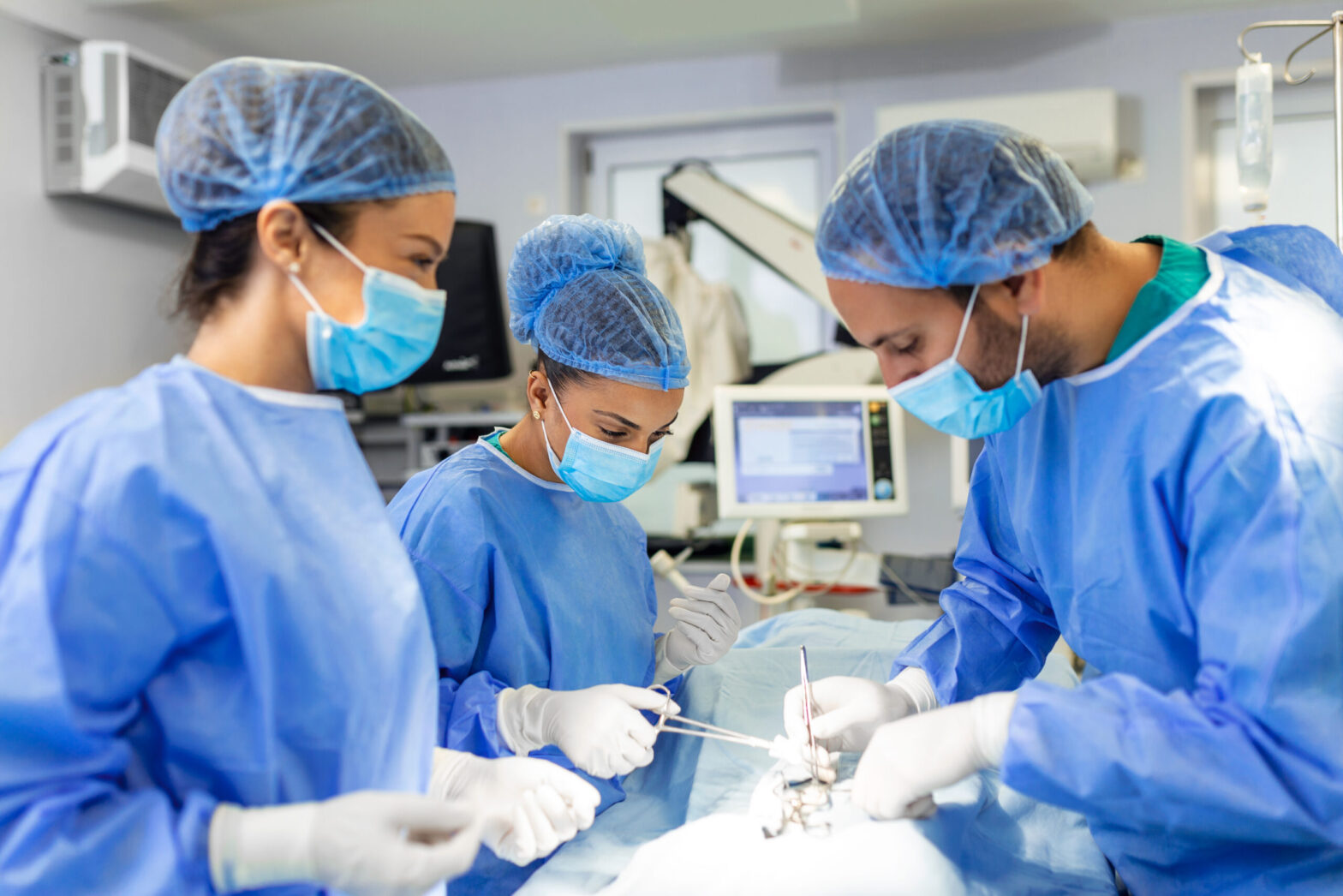
Robotic Hernia Surgery: An In-Depth Illustrated Overview
We believe minimally invasive care is life-enhancing care

Hernias are a worldwide phenomenon familiar to millions. The condition occurs when an organ or tissue pushes through an area of weakness in the muscle or connective tissue surrounding it. In a way, this might make it more likely to become painful or cause complications in the future. Some of these remain small and innocuous, while others may become problematic with time and require surgical intervention to prevent further deterioration and suffering or even become life-threatening. Over the years, many advances in surgery have improved hernia treatment results. Robotic hernia surgery has been a game changer, adding improved precision, fewer discomforts, and quicker recovery. The surgery is performed with the aid of robotic tools under the control of a robotics surgeon. Thus, it is minimally invasive yet highly effective.
This blog covers all aspects of robotic hernia surgery, from the benefits to why this procedure is starting to gain popularity worldwide with patients.
Hernias: What To Know
A hernia occurs when an internal organ pushes through weakened connective or muscular tissue, creating a visible bump or discomfort. This condition can be caused by factors such as strain, heavy lifting, excess body fat, or genetic predisposition. There are several types of hernias, including groin (inguinal), abdominal wall (ventral), belly button (umbilical), and diaphragm (hiatal) hernias, each requiring different surgical approaches. If left untreated, hernias can lead to serious complications like strangulation, where blood flow to trapped tissues is cut off, posing significant health risks.
Over the past century, hernia surgery has undergone significant advancements. Traditional open surgery, once the standard, involved large incisions, lengthy recovery times, and considerable postoperative pain, along with the risk of infection and extended hospital stays. The introduction of laparoscopic surgery brought about smaller incisions, enabling quicker healing. The latest innovation in hernia repair is robotic hernia surgery, which offers even greater precision and reduced damage to surrounding tissue, leading to faster recovery times and improved outcomes compared to previous surgical methods.
Types of Robotic Hernia Repairs

Robotic hernia surgery is the most advanced today. This is one of the robotic-assisted systems that repair hernias surgically and guarantee accuracy for surgery. The procedure involves handling the robotic arms through a console by a superiorly skilled robotics surgeon to deliver surgical precision that in no way reflects the capacity of human competency.
Robotic surgery’s greatest advantage is the extremely high-definition 3D visualization system that helps the surgeon comprehend complex anatomy. Other than that, robotic instruments possess increased dexterity, which means that they will perform fine movements and have better control with minimal trauma to surrounding tissues, thus causing a superior overall patient outcome.
- Robotic Inguinal Hernia Surgery
This procedure occurs when patients present inguinal hernias. It occurs in the groin and is mainly seen in men. Robotic inguinal hernia repair eliminated larger skin incisions, reduced postoperative pain, and sped recovery back to baseline activities.
- Robotic Ventral Hernia Repair
Ventral hernias appear within the abdominal wall, usually resulting from previous surgery or weak muscles. Robotic ventral hernia repair is credited with optimizing precision, minimizing recurrence, and providing benefits in recovery.
- Robotic Minimally Invasive Hernia Repair
From a minimally invasive viewpoint, robotic laparoscopic hernia surgery combines robotic technology with laparoscopic techniques to work its magic. The robotic minimally invasive approach is specifically designed to treat difficult hernias and those in obese patients for better overall surgical results.
Robotics Surgeon Function
A robotics surgeon is somebody suitably qualified with additional training to operate a robotic-assisted system in delicate surgery. It enhances precision in surgery, reduces complications, and improves patient safety during the operation.
Advantage Of Robotic Surgery For Hernias
- More Precision – It is only robotic technology can perform finer movements in surgery beyond what humans have and hence improving repair accuracy.
- Smaller Incisions – Small cut leads to less trauma to the body, which heals into tiny scars, and thus reduces the chances of an infection; hence, patient comfort is increased.
- Less Pain and Scarring – Compared to open surgery, patients generally experience less pain after surgery and a better cosmetic result.
- Faster Medical Recovery – Most patients, in general, are symptom-free and able to resume normal work within days stretched over a week.
- Less Chance of Complications – Enhanced visualization and precision decrease the chances of recurrence and infection.
- Better Outcome – The way we apply it allows for long-term success rates in terms of mesh placement and tissue reinforcement.
Robotic Surgery- More Than Hernias: The Bigger Picture
While robotic hernia surgery has revolutionized hernia treatment, the applications of robotic technology extend far beyond that. Surgeons globally are utilizing robotic systems in a wide range of complex surgeries, resulting in improved, patient-specific outcomes and quicker recoveries across various medical fields. One of the most significant uses of robotic surgery is in robotic cancer surgery, which allows for the precise removal of tumors while preserving healthy tissues. This technology is also crucial in robotic pancreatic surgery, where delicate structures like blood vessels and the pancreas are involved, providing greater dexterity and control to reduce complications and improve long-term success rates.
Robotic surgery has also made significant strides in the field of gastrointestinal procedures, such as robotic gallbladder surgery and colonic procedures, offering better visualization and minimally invasive techniques. This reduces postoperative complications, accelerates recovery, and shortens hospital stays. Additionally, robotic surgery is frequently used in urology for prostate and kidney surgeries and in gynecology for treating conditions like endometriosis and fibroids. The continuous advancements in robotic technology are expanding its capabilities, enhancing the precision and efficiency of complex surgeries.
The Robotic Hernia Surgery Process: Pre-, During, and Post-Operation

Pre-Surgery:
Medical Evaluation:
Before robotic hernia surgery, a thorough medical evaluation is performed to assess the patient’s overall health and suitability for the procedure. This may include physical exams, diagnostic tests, and medical history reviews to ensure a safe and effective surgery tailored to the patient’s needs.
Pre-Operative Instructions:
Patients will receive pre-operative instructions, including dietary restrictions and safety guidelines, to prepare for surgery. These instructions help ensure the body is ready for the procedure, minimizing risks and promoting a smooth operation.
During Surgery:
- General Anesthesia:
The surgeon performs the surgery under general anesthesia, keeping the patient unconscious and pain-free throughout the procedure. - Robotic-Assisted Precision:
Robotic hernia surgery utilizes robotic arms for precise cuts and sutures, reducing stress on the body and allowing for smaller incisions and better control during the procedure.
Postoperative:
- Minimal Pain and Quick Discharge:
Many patients report minimal pain after surgery, allowing for discharge within 24 hours. The less invasive approach reduces the need for intense pain management. - Swift Recovery:
Recovery is typically fast, with most patients returning to normal activities within a week. Follow-up appointments ensure proper healing and a smooth recovery process. Robotic hernia surgery offers a faster, less painful recovery compared to traditional methods.
Average Time for Robotic Hernia Repair:
The average length of robotic hernia surgery is between 1 and 2 hours, depending on the complexity and nature of the hernia to be fixed. Robotic surgery performs more quickly than open surgery, causing less tissue disruption and smaller wounds due to its minimally invasive nature.
Recovery Time for Robotic Hernia Surgery:
One of the major advantages of robotic hernia surgery is that the recovery time is relatively short. The majority of patients can resume their usual activity in 1week since the minimally invasive technique results in less pain and destruction of the tissues around the hernia. Although variation may be individual, many patients can start light activities in a few days and full activities within 2 to 4 weeks. Follow-up visits will assist in proper healing and will pick up on any early complications.
When to Consult a Doctor
Although robotic hernia surgery is relatively low in complications, patients must be mindful of warning signs that may suggest a problem. You should see your physician if you experience:
- Severe pain or discomfort not alleviated by pain medication prescribed by your physician.
- Redness, swelling of the incision site, or if the site becomes warm to the touch as this may be a sign of infection.
- Fever or chills, which can be signs of infection or other complications.
- Nausea, vomiting, or trouble urinating may be symptoms of complications from the surgery or anesthesia.
- Alterations in the hernia’s look or if you see a return of the bulge following surgery.
Early talk with your doctor can address issues and avoid possible complications, which will ensure the healing process is smooth.
End Note
Is robotic hernia surgery right for you? It can be an excellent option for any patient requiring hernia repair, particularly because it is a minimally invasive alternative that reduces recovery time and minimizes the risk of complications. Robotic inguinal hernia surgery and robotic laparoscopic hernia surgery ensure quicker recovery and optimal results for patients. Robotic surgery’s precision and minimal incisions allow patients to return to their daily routines faster, with fewer risks than traditional methods.
At MH Robotic Surgery Clinic, we offer some of the best medical services available, making us the ideal choice for robotic surgery in India. Under the expert care of Dr. Manjunath Haridas, a renowned pioneer in robotic surgery, patients can expect highly personalized and effective treatment plans. Dr. Haridas and his team of qualified robotic surgeons work closely with patients to determine the best surgical approach tailored to their specific conditions. With cutting-edge robotic technology and a commitment to excellence, MH Robotic Surgery Clinic ensures a smooth, successful recovery, helping patients achieve the best possible outcomes.



